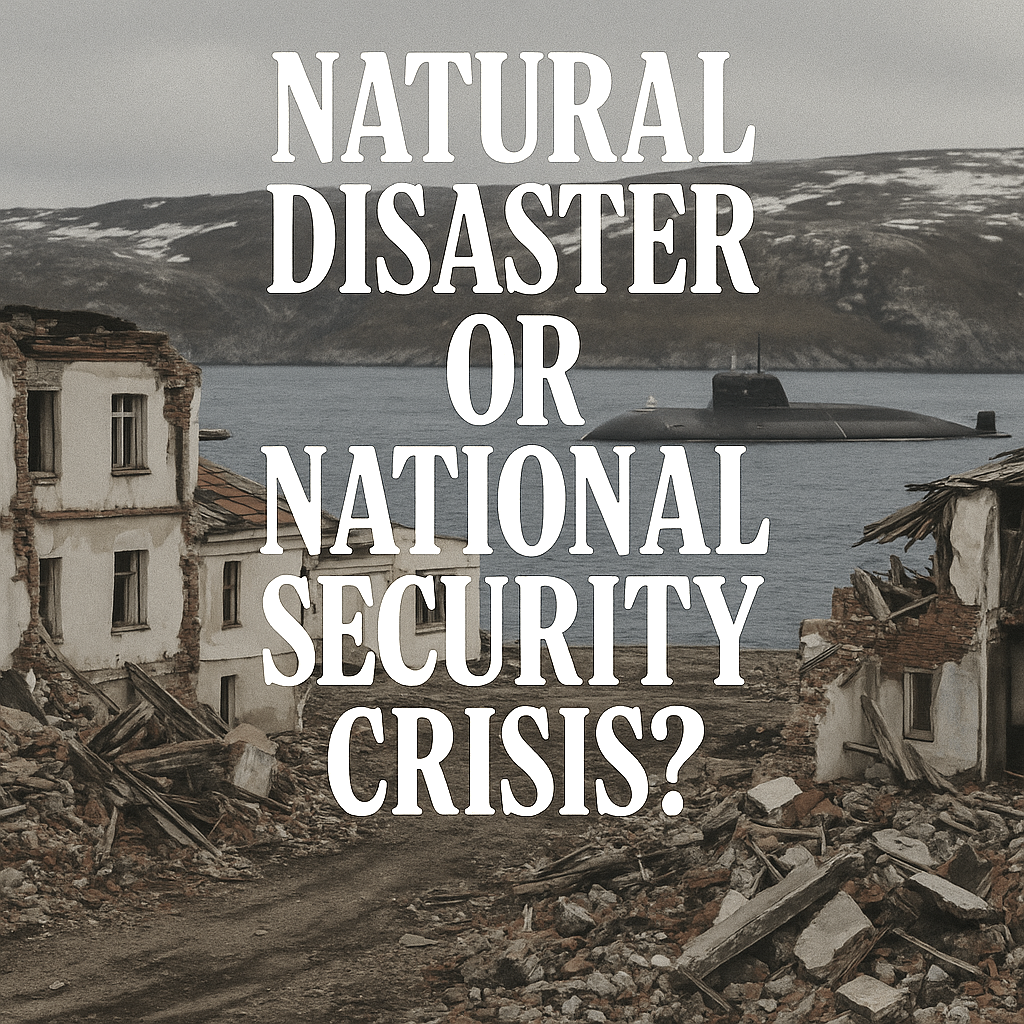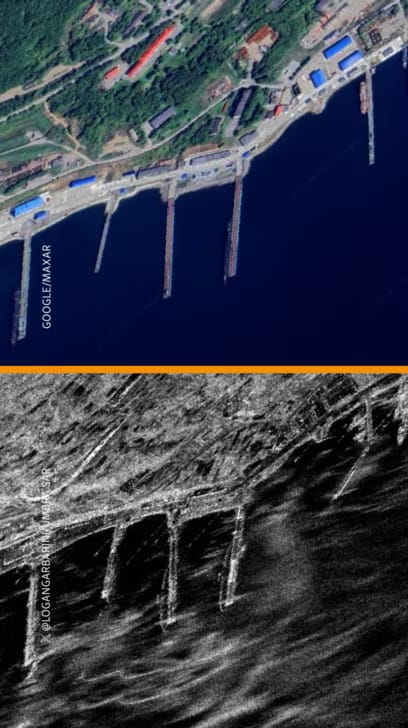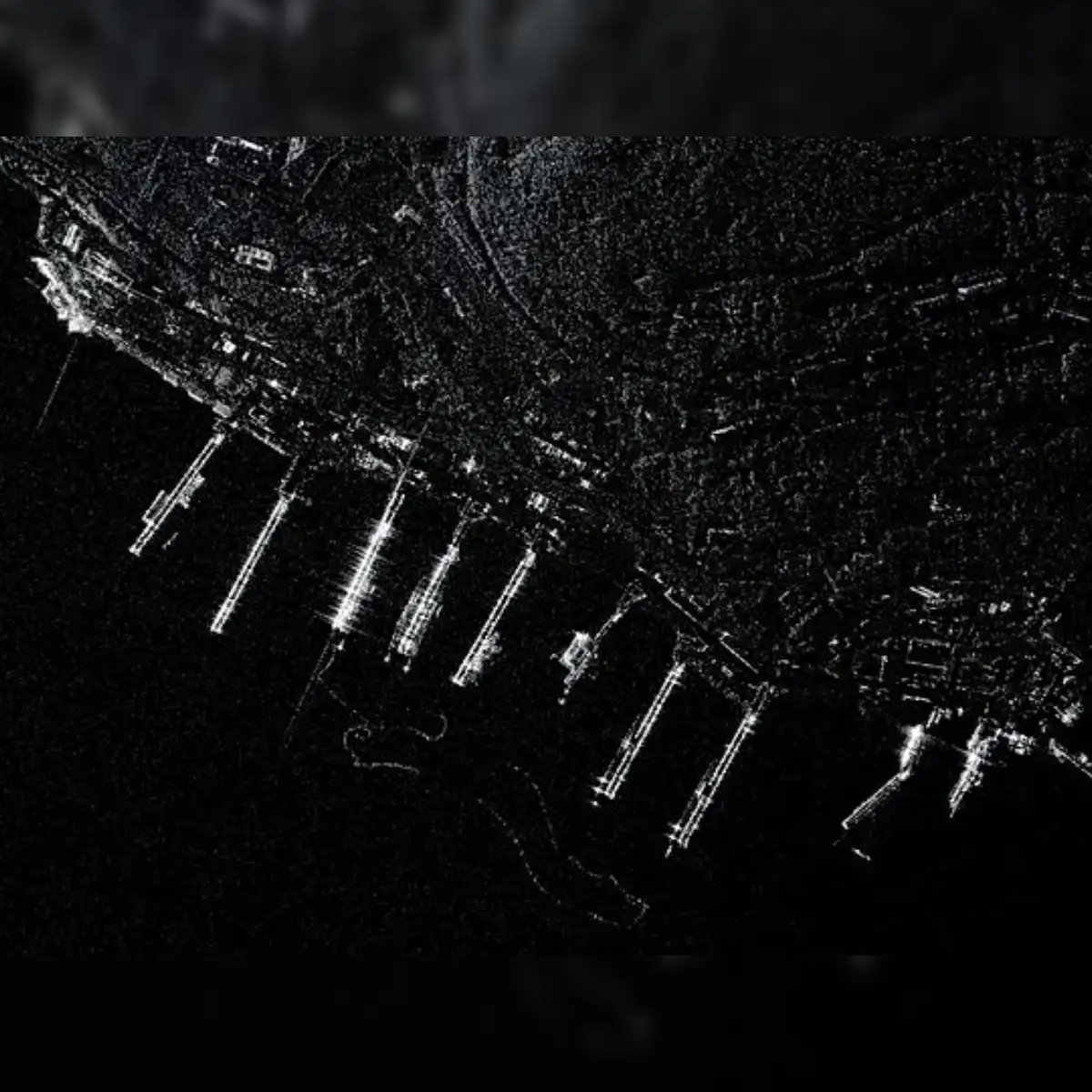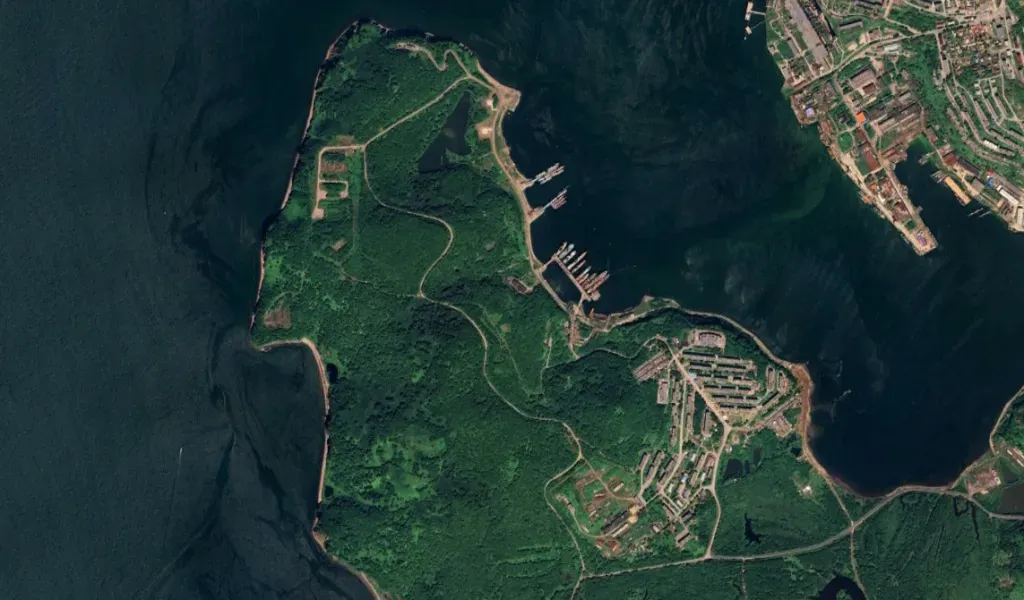How Earthquake Faultlines Intersect with Nuclear Frontlines: The Case of Russia’s Submarine Base
A powerful earthquake off Russia's Kamchatka Peninsula has exposed a critical vulnerability in the Kremlin’s nuclear deterrent.

Written by Lavanya, Intern, Allegedly The News
PETROPAVLOVSK-KAMCHATSKIY, RUSSIA, August 5, 2025
The Earth's crust is a volatile patchwork of tectonic plates, and in the vast, frozen expanse of the Arctic and the Russian Far East, these geological fault lines intersect with the most sensitive and strategic infrastructure on the planet: nuclear frontlines. For decades, Russia's military has leveraged the remote and inhospitable nature of these regions to conceal and protect its nuclear deterrent, a critical leg of its strategic triad. But a recent, massive earthquake and subsequent tsunami on the Kamchatka Peninsula have shown that Mother Nature's power is a force that even nuclear-armed nations cannot fully contain. Satellite imagery and a deafening silence from the Kremlin have painted a picture of a damaged submarine base, raising profound questions about the resilience of Russia's nuclear infrastructure and the urgent need for new international monitoring protocols.
A Factual Breakdown: What Was Damaged, What’s Being Hidden
On July 30, a powerful earthquake, initially measured at a magnitude of 8.8, rocked the Kamchatka Peninsula, a region known as the "land of fire and ice" for its intense seismic and volcanic activity. The epicenter of the quake was alarmingly close, approximately 80 miles to the Rybachiy submarine base in Avacha Bay, a crucial installation for Russia's Pacific Fleet. The earthquake, which was one of the strongest ever recorded in the region since 1952, triggered tsunami warnings across the Pacific and sent powerful waves crashing into Russia’s eastern coastline.
While Russian authorities were quick to downplay the impact, declaring no major damage and few injuries in the nearby city of Petropavlovsk-Kamchatskiy, independent analysis from commercial satellite imagery told a different story. Pictures from Umbra Space and Planet Labs, taken in the days following the event, revealed a critical structural failure at the Rybachiy base. A section of a floating pier, a key piece of infrastructure used for docking and servicing vessels, was visibly bent and appeared to have detached from its moorings. While experts are quick to point out that no submarines were docked at the damaged pier and the main facility appeared largely intact, the incident serves as a stark reminder of the inherent risks of situating critical military assets in a volatile seismic zone. The Kremlin’s subsequent silence on the matter, a strategy of denial that has been a hallmark of Russian governance since the sinking of the Kursk submarine in 2000, has fueled speculation and deepened international concern.
The incident highlights a significant vulnerability: the concentration of a nation's nuclear deterrent in a single, geographically unstable location. The Rybachiy base is home to Russia's most advanced Borei-class submarines, armed with Bulava nuclear missiles, which constitute a vital component of the country's strategic nuclear triad. The potential for a natural disaster to cripple this key leg of the triad has far-reaching geopolitical implications.

The Seismic Threat to a Strategic Deterrent
The case of the Rybachiy base is a potent illustration of how tectonic and nuclear fault lines can become a growing global risk. Russia’s reliance on its nuclear triad of land-based intercontinental ballistic missiles (ICBMs), submarine-launched ballistic missiles (SLBMs), and strategic bombers is a cornerstone of its national security. The submarines, in particular, provide a crucial "second-strike" capability, a mobile and hidden deterrent that is less vulnerable to a surprise attack than fixed land-based silos.
However, this strategic advantage is severely compromised when the very bases that house and maintain these vessels are located in a region prone to natural disasters. The Kamchatka Peninsula sits on the Pacific "Ring of Fire," a horseshoe-shaped area of intense seismic activity where the Pacific Plate subducts beneath the Okhotsk Plate. The 8.8 magnitude earthquake was a direct result of this geological process. While the Rybachiy base was built with earthquake resistance in mind, as retired Russian Navy Captain Vasily Dandykin stated to the daily Moskovsky Komsomolets, repeated and powerful seismic events could compromise its structural integrity over time.
The recent event, while causing limited damage to a single pier, serves as a powerful warning. A more severe earthquake or a larger tsunami could have catastrophic consequences, including damage to the submarine itself while it is being serviced, or the compromising of missile loading and shipyard facilities. Such an incident would not only temporarily alter Russia’s underwater nuclear deterrence but also pose a significant intelligence risk. Structural damage to a base could expose sensitive details about its operations and vulnerabilities to foreign surveillance.
A Vulnerability Revealed: Altering Russia’s Underwater Deterrence
The damage to the Rybachiy base, while not crippling, is a strategic setback for Russia. The twisted pier, even if it can be repaired quickly and inexpensively, as some analysts suggest, disrupts the normal tempo of operations. The process of docking, refitting, and resupplying these massive submarines becomes more complex and time-consuming. This could temporarily alter Russia's underwater nuclear deterrence capability by limiting the ability to quickly deploy or redeploy a portion of its Pacific Fleet.
Moreover, the incident shines a light on a more significant problem: Russia's lack of redundant infrastructure for its Pacific nuclear deterrent. As one analyst, Jason Jay Smart, pointed out, if the infrastructure at Avacha Bay were to be significantly damaged, Russia's entire Pacific deterrent could be compromised, as it has no viable backup. Moving these assets to another major naval base like Vladivostok is not a simple solution, given the different operational requirements and the sheer size of the Borei-class submarines. This single-point-of-failure vulnerability is a critical weakness that a geopolitical adversary could, and almost certainly will, factor into its strategic calculations.
The Kremlin's secrecy surrounding the incident is also revealing. The policy of denying and concealing failures, a tactic honed by President Putin, suggests that the leadership understands the strategic importance of what happened. Admitting to the damage would not only be a public relations disaster but also an acknowledgment of a major vulnerability to both a domestic and international audience. The lack of a transparent, official report fuels suspicion and highlights the need for international monitoring of nuclear infrastructure, particularly in high-risk zones.

Geopolitical Fallout: NATO's Arctic Intelligence and the Need for Monitoring
The earthquake and its impact on the Rybachiy base have reverberated far beyond the Kamchatka Peninsula, directly affecting NATO’s intelligence and surveillance operations in the Arctic. With the accession of Finland and Sweden, the alliance’s northern flank has expanded, making the Arctic a new frontier of strategic competition. The recent seismic event provides a unique intelligence opportunity for NATO to assess the resilience of Russian military infrastructure.
NATO surveillance, which has been intensifying in the Arctic to monitor Russia's military buildup, is now likely focused on collecting data about the Rybachiy base's recovery efforts. The damage provides a real-world stress test of Russian emergency response and repair capabilities. This incident provides invaluable data for NATO to understand how Russia would respond to a non-military, but potentially crippling, event at a critical military installation. The intelligence community will be analyzing everything from satellite imagery of repair crews and tugboats to signal intelligence to determine the operational tempo of the base.
This situation underscores the growing consensus for international monitoring protocols for nuclear infrastructure. The Fukushima Daiichi nuclear disaster in 2011 demonstrated the devastating link between natural disasters and nuclear risk. The Rybachiy incident, while not a nuclear catastrophe, highlights the same nexus of risk. The International Atomic Energy Agency (IAEA) already plays a vital role in monitoring civilian nuclear facilities. However, the lack of transparency around military installations, especially those housing strategic nuclear assets, leaves a dangerous blind spot. An international framework for rapid, independent assessment and verification in the event of a natural disaster at such a site is becoming a geopolitical necessity to mitigate the risk of nuclear accidents and miscalculation.
The New Age of Geostrategic Risk
The Rybachiy incident introduces a new and critical dimension to global security. We are entering an era where geopolitical "frontlines" are not just defined by military deployments and territorial disputes, but by the physical resilience of a nation’s most vital infrastructure. The fusion of tectonic and nuclear risk creates a new category of "geostrategic" vulnerability. A natural disaster is not just a humanitarian crisis; it is a potential threat to the global strategic balance. This event forces us to re-evaluate our understanding of national security, moving beyond a purely human-centric view of threats to one that includes the unpredictable and immense power of the natural world. The Rybachiy incident proves that in the 21st century, a nation’s greatest military asset can be as vulnerable to a geological event as it is to a direct military attack.

What Happens Next? A Call to Action and New Questions
The clock is ticking on a full recovery at the Rybachiy base. Russia will undoubtedly work to repair the damage in secret, but its adversaries will be watching closely via a variety of intelligence-gathering methods. The incident has also created a new playbook for NATO, providing a unique opportunity to assess the resilience of Russian infrastructure and its emergency response capabilities.
The primary questions moving forward are:
- How will this incident influence Russia's future military infrastructure planning? Will they move to create more dispersed, redundant bases, or will they double down on existing locations with more hardened defenses?
- What new intelligence and surveillance protocols will NATO and its allies implement to monitor high-risk zones, and how will this affect the escalating strategic competition in the Arctic?
- Will the international community leverage this incident to push for binding international monitoring protocols for military nuclear facilities, or will the issue be allowed to fade back into the shadows of classified information and political gridlock?
The Rybachiy earthquake is a wake-up call. The world must move from a reactive posture to a proactive one, establishing a framework for transparency and cooperation before the next natural disaster turns a geopolitical vulnerability into a global catastrophe.
Sources
The New York Times, Planet Labs, Conflict Intelligence Team, U.S. Geological Survey, UNITED24 Media, The Hindustan Times, Google Earth, Maxar Technologies, Planet Labs, Sentinel Hub via open-source intelligence (OSINT), LO_GANGARBIA / Naval OSINT, The Economist Times, World Nuclear Association, CTBTO, MIT News.




